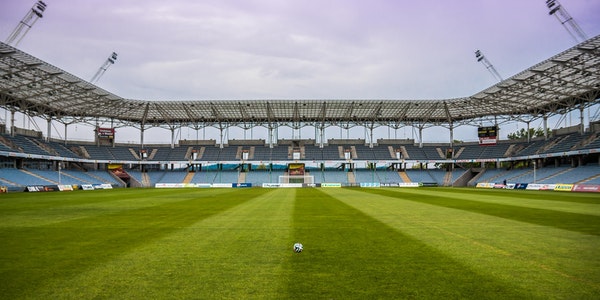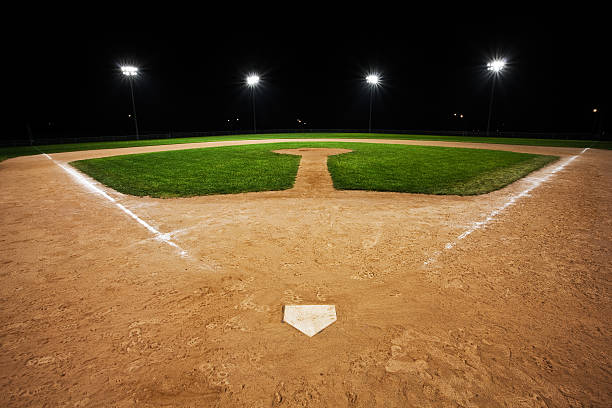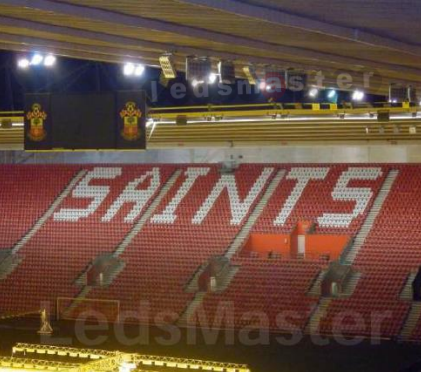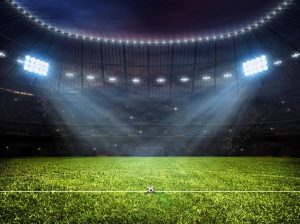(3) Flicker and Strobe Effects:
Standards Overview:
Detail: Lighting systems should minimize flicker and strobe effects, which can affect visual perception and cause discomfort or distraction to athletes and spectators.
Purpose: Ensure consistent and stable lighting conditions to support concentration, reaction times, and overall safety during fast-paced sports activities.
Example: Adherence to standards set by organizations like the Illuminating Engineering Society (IES) for flicker-free operation enhances visual comfort and reduces potential health risks associated with rapid light intensity fluctuations.
(4) Glare Control and Shielding:
Standards Overview:
Detail: Effective glare control involves shielding light sources and directing illumination away from players’ eyes and spectators’ viewing angles to minimize discomfort and visual impairment.
Purpose: Enhance visibility of the playing field or court while reducing distractions and ensuring safety by preventing temporary vision impairment.
Example: Implementing shielded luminaires and applying anti-glare coatings align with IES guidelines for glare reduction, optimizing visual comfort and safety for all stakeholders.
(5) Energy Efficiency and Sustainability:
Standards Overview:
Detail: Energy-efficient lighting solutions, such as LEDs, are encouraged to reduce operational costs, environmental impact, and carbon footprint of sports venues.
Purpose: Align with sustainability goals, comply with energy efficiency regulations, and demonstrate commitment to environmental stewardship.
Example: Meeting standards like those outlined in the European Union’s Eco-design Directive ensures lighting systems are designed for optimal energy performance and minimal environmental impact throughout their lifecycle.
(6) Emergency Lighting and Backup Systems:
Standards Overview:
Detail: Emergency lighting systems must comply with local building codes and safety regulations to provide adequate illumination during power outages or emergencies.
Purpose: Ensure continuity of operations, evacuation safety, and visibility for emergency response teams and personnel.
Example: Installing backup generators, battery-powered luminaires, and illuminated exit signs adheres to standards set by organizations such as the National Fire Protection Association (NFPA), enhancing venue safety and compliance with emergency preparedness guidelines.
Adherence to lighting quality and safety standards in sports venues is essential for optimizing performance, ensuring spectator comfort, and maintaining regulatory compliance. By meeting illumination levels, CRI specifications, glare control measures, and energy efficiency guidelines, organizations can create an environment that enhances visibility, supports fair play, and prioritizes the well-being of all participants and attendees. Continuous monitoring, periodic audits, and upgrades to lighting technologies enable venues to uphold high standards of quality, safety, and sustainability in sports lighting applications.
I. Conclusion
Summary of Key Points:
Recap of benefits and advancements
Over the past decade, advancements in sports venue lighting, particularly with the adoption of LED technology, have revolutionized the landscape of sports events. Here’s a recap of the key benefits and advancements:
- Energy Efficiency:
Advancement: Transition from traditional lighting (e.g., metal halide) to LED technology has significantly reduced energy consumption by up to 50% or more.
Benefit: Lower operational costs for venue operators while supporting sustainability goals by reducing carbon footprint.
- Improved Visibility and Clarity:
Advancement: LEDs offer superior light quality, high color rendering index (CRI), and reduced glare compared to older lighting technologies.
Benefit: Enhanced visibility for players, officials, and spectators, enabling better performance assessment, fan engagement, and broadcast quality.
- Flexibility and Dynamic Lighting:
Advancement: LEDs allow for dynamic lighting control, including color tuning and dimming capabilities, to create immersive experiences and adapt to different sports and events.
Benefit: Enhances ambiance, supports multi-purpose venue usage, and accommodates entertainment events with personalized lighting effects.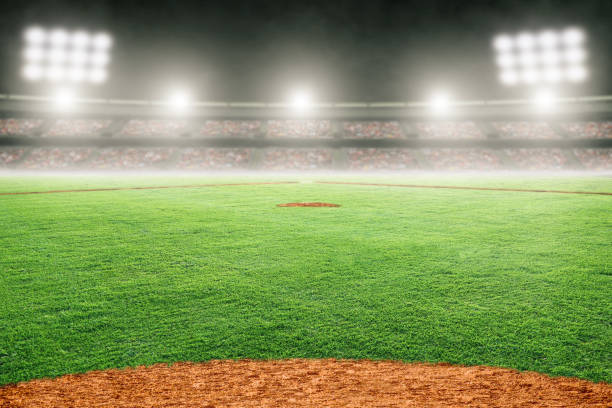
- Safety and Player Performance:
Advancement: Improved uniformity and reduced flicker in LED lighting contribute to a safer playing environment with minimal disruption to athletes.
Benefit: Supports accurate decision-making, reduces eye strain, and enhances reaction times, thereby optimizing player performance and reducing injury risks.
- Broadcast Quality and Fan Experience:
Advancement: LEDs offer flicker-free operation and consistent lighting levels, improving broadcast quality for television and streaming services.
Benefit: Enhances viewer engagement, delivers clearer visuals of gameplay, and elevates the overall fan experience both in-stadium and remotely.
- Longevity and Maintenance Cost Savings:
Advancement: LEDs have a longer lifespan (typically 50,000 hours or more) and require less frequent maintenance compared to traditional lighting sources.
Benefit: Reduces downtime for maintenance, lowers replacement costs, and ensures consistent performance over extended periods.
- Environmental Impact:
Advancement: LED technology aligns with global sustainability efforts by minimizing energy use and reducing greenhouse gas emissions.
Benefit: Supports eco-friendly venue operations, meets regulatory requirements for energy efficiency, and enhances corporate social responsibility initiatives.
The evolution of sports venue lighting, driven by LED technology and innovative lighting design, has brought about numerous benefits across energy efficiency, visibility, safety, broadcast quality, and sustainability. These advancements not only enhance the overall experience for athletes and fans but also contribute to operational cost savings and environmental stewardship. Looking ahead, continued innovation and adoption of smart lighting solutions are expected to further optimize sports venue environments, supporting diverse sporting activities and enhancing the global appeal of sports entertainment.
Importance of LED lighting in modern sports venues
LED (Light Emitting Diode) lighting has become integral to modern sports venues, revolutionizing the way events are illuminated and experienced. Here’s why LED lighting is crucial:
- Energy Efficiency and Cost Savings:
Efficiency: LEDs consume significantly less energy compared to traditional lighting sources like incandescent or metal halide lamps.
Savings: Reduced energy consumption translates to lower utility bills and operational costs for sports venue operators, making LED lighting a cost-effective choice in the long term.
- Enhanced Visibility and Performance:
Quality of Light: LEDs provide high-quality illumination with better color rendering and uniformity across the playing field or court.
Clarity: Improved visibility helps players perform better, referees make accurate decisions, and spectators enjoy clearer views of the action, enhancing overall game dynamics.
- Flexibility and Dynamic Lighting Control:
Adaptability: LED technology allows for dynamic lighting adjustments, such as dimming, color changing, and instant on/off capabilities.
Versatility: Sports venues can create unique atmospheres for different events, adjust lighting levels for TV broadcasts, and integrate lighting effects for entertainment purposes.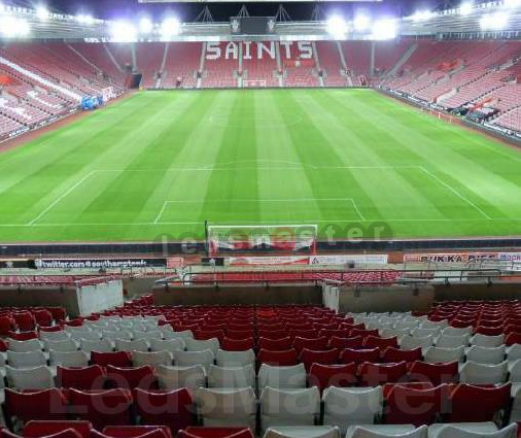
- Safety and Player Welfare:
Reduced Glare: LEDs minimize glare and shadows on the playing surface, ensuring consistent visibility and reducing eye strain for athletes.
Flicker-Free Operation: Stable lighting with no flickering supports concentration, reaction times, and overall safety during fast-paced sporting activities.
- Improved Broadcast Quality:
Broadcast Compatibility: LED lighting provides flicker-free operation and consistent lighting levels, enhancing the quality of televised broadcasts and streaming services.
Viewing Experience: Fans watching from home or in-stadium benefit from clearer visuals and enhanced viewing experiences, increasing engagement and satisfaction.
- Longevity and Low Maintenance:
Durability: LEDs have a longer lifespan compared to traditional lighting sources, reducing the frequency of bulb replacements and maintenance downtime.
Reliability: Sports venues can operate more efficiently with fewer interruptions, ensuring consistent lighting performance over extended periods.
- Environmental Sustainability:
Energy Efficiency: Lower energy consumption reduces carbon footprint and aligns with global sustainability goals.
Eco-Friendly Operations: LED lighting supports environmentally responsible practices, meeting regulatory requirements and enhancing corporate social responsibility initiatives.
LED lighting represents a transformative advancement in modern sports venue technology, offering unparalleled benefits in energy efficiency, visibility, flexibility, safety, and sustainability. As sports organizations continue to prioritize enhanced player performance, fan engagement, and operational efficiency, the adoption of LED lighting is crucial for creating dynamic and memorable experiences in sports entertainment worldwide.
Final Thoughts:
Long-term impact on sports and entertainment
LED (Light Emitting Diode) lighting has not only revolutionized sports venue illumination but also significantly impacted the broader realms of sports and entertainment. Here’s how LED lighting continues to shape these industries over the long term:
- Enhanced Spectator Experience:
Ambiance and Atmosphere: LED technology allows sports venues to create immersive environments with dynamic lighting effects, enhancing the overall spectator experience.
Entertainment Integration: Lighting can be synchronized with music and video displays, elevating the atmosphere during breaks and entertainment segments, thereby increasing fan engagement.
- Optimized Broadcast Quality:
Visual Clarity: LED lighting provides consistent and flicker-free illumination, ensuring high-definition broadcast quality for television and streaming platforms.
Enhanced Viewing Experience: Viewers benefit from clearer visuals, better color accuracy, and improved detail, enhancing the viewing experience both in-stadium and at home.
- Safety and Performance in Sports:
Player Performance: Improved visibility and reduced glare support athlete performance by providing optimal lighting conditions on the field or court.
Referee Decision-Making: Clearer visibility aids referees in making accurate decisions, thereby minimizing errors that could impact game outcomes.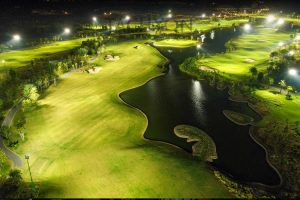
- Environmental Sustainability:
Energy Efficiency: LED lighting significantly reduces energy consumption compared to traditional lighting technologies, contributing to lower operational costs and reduced carbon footprint.
Compliance and Responsibility: Sports organizations demonstrate commitment to environmental sustainability through energy-efficient lighting solutions, aligning with global environmental standards and regulations.
- Operational Efficiency and Cost Savings:
Longevity and Maintenance: LEDs have a longer lifespan and require less frequent replacement, reducing maintenance costs and downtime for sports venues.
Financial Impact: Lower energy bills and reduced operational expenses contribute to overall cost savings, allowing venues to allocate resources to other areas of improvement.
- Innovation and Adaptability:
Technological Advancements: Continuous innovation in LED technology offers opportunities for further enhancements, such as smart lighting systems and integration with IoT (Internet of Things) platforms.
Flexibility: Venues can adapt lighting settings for different sports, events, and entertainment purposes, enhancing versatility and maximizing venue usage.
- Global Adoption and Standardization:
Industry Influence: The widespread adoption of LED lighting in major sports venues sets new standards for lighting quality, sustainability, and operational excellence.
Best Practices: Sports organizations worldwide are encouraged to follow suit, fostering a global shift towards energy-efficient and environmentally responsible practices.
LED lighting has ushered in a new era of innovation, efficiency, and enhanced experiences across the sports and entertainment sectors. By improving visibility, optimizing broadcast quality, promoting sustainability, and driving operational efficiencies, LED technology continues to shape the future of sports venue management and spectator engagement. As advancements in LED technology evolve, its impact on sports and entertainment is expected to grow, reinforcing its pivotal role in creating memorable and sustainable experiences for athletes, fans, and stakeholders alike.
Encouragement for continued innovation and adoption
LED (Light Emitting Diode) lighting has demonstrated significant benefits and transformative potential in sports venues and entertainment settings. To sustain and amplify these advantages, continuous innovation and widespread adoption are crucial. Here’s why and how encouragement can drive this forward:
- Enhanced Performance and Experience:
Innovative Applications: Encourage exploration of advanced lighting technologies such as smart LEDs, which offer dynamic control and customization for different sports and events.
Improving Fan Engagement: Innovate with lighting effects synchronized with sound and video, enhancing the overall spectator experience and attracting a broader audience.
- Sustainability and Efficiency:
Advancing Eco-Friendly Solutions: Support research and development in energy-efficient LEDs and sustainable lighting practices, aiming for reduced environmental impact and operational costs.
Promoting Standards: Advocate for adherence to global energy efficiency standards and certifications, driving industry-wide adoption of eco-friendly lighting solutions.
- Technological Integration:
IoT and Automation: Promote integration of LED lighting with IoT platforms and automation systems, enabling real-time adjustments and energy optimization based on venue occupancy and event dynamics.
Data-Driven Insights: Encourage the use of smart lighting analytics to gather data on usage patterns and optimize lighting strategies for maximum efficiency and performance.
- Safety and Visibility:
Continuous Improvement: Invest in research to further reduce glare, enhance color rendering, and improve uniformity of light distribution, ensuring optimal visibility and safety for athletes and spectators.
Innovative Designs: Explore innovative fixture designs and installation techniques that minimize maintenance requirements and maximize longevity, ensuring consistent performance over time.
- Collaboration and Knowledge Sharing:
Industry Partnerships: Foster collaboration between lighting manufacturers, sports organizations, and entertainment venues to exchange best practices, innovative ideas, and case studies.
Educational Initiatives: Support educational programs and workshops that highlight the benefits of LED lighting, driving awareness and encouraging broader adoption across different sectors.
- Regulatory Support and Incentives:
Policy Advocacy: Advocate for policies that incentivize the adoption of energy-efficient lighting technologies and sustainable practices in sports and entertainment venues.
Financial Incentives: Provide financial incentives, grants, or tax credits to organizations adopting LED lighting solutions, encouraging investment in sustainable infrastructure and technology.
Encouraging continued innovation and adoption of LED lighting in sports and entertainment is vital for advancing sustainability, enhancing performance, and improving the overall fan experience. By fostering collaboration, supporting technological integration, promoting sustainability initiatives, and advocating for regulatory support, stakeholders can collectively drive positive change and propel the industry towards a brighter, more sustainable future. Embracing the transformative potential of LED lighting ensures that sports venues and entertainment settings remain at the forefront of innovation, delivering memorable experiences while minimizing environmental impact and operational costs.
–The End–

